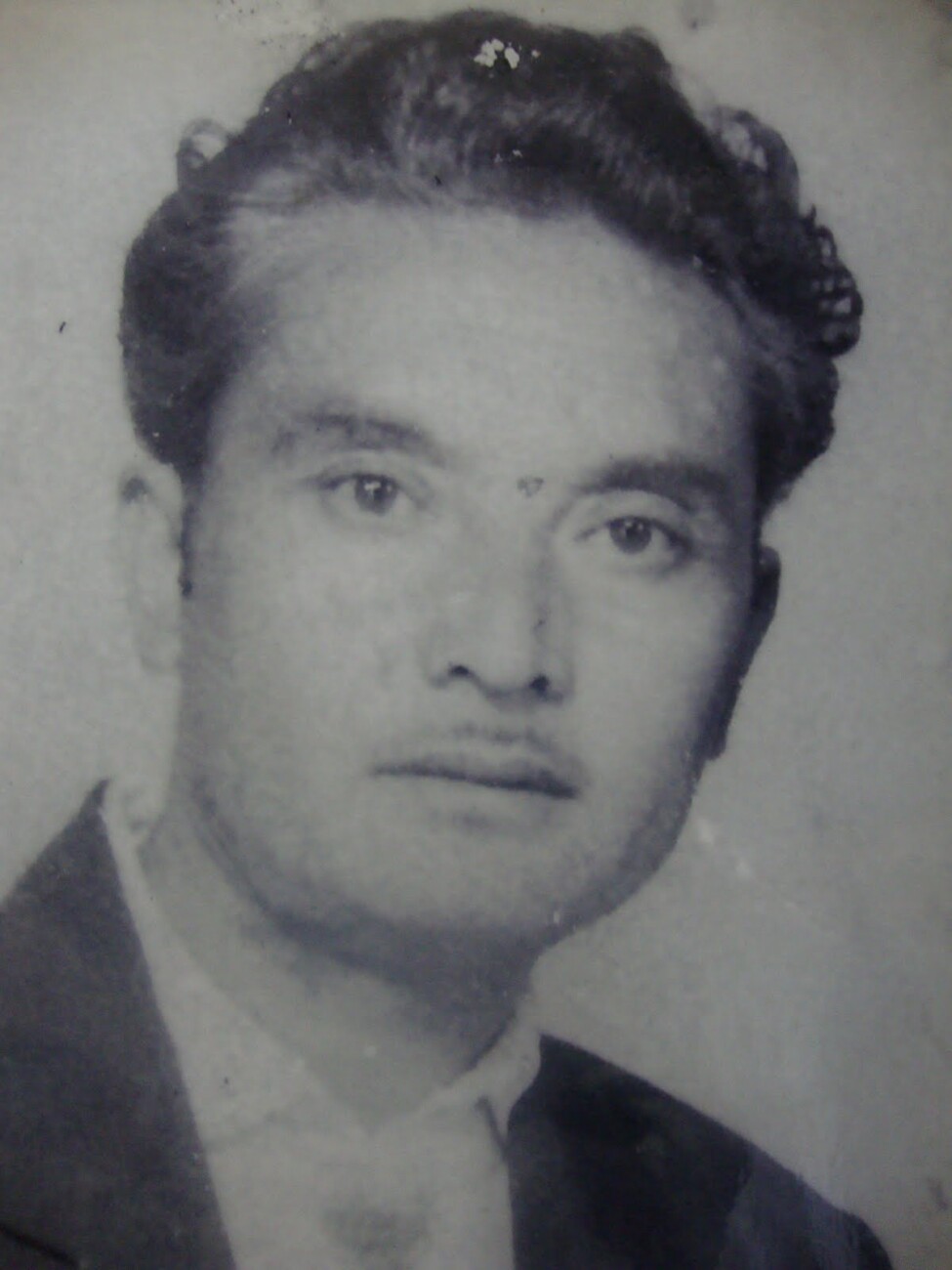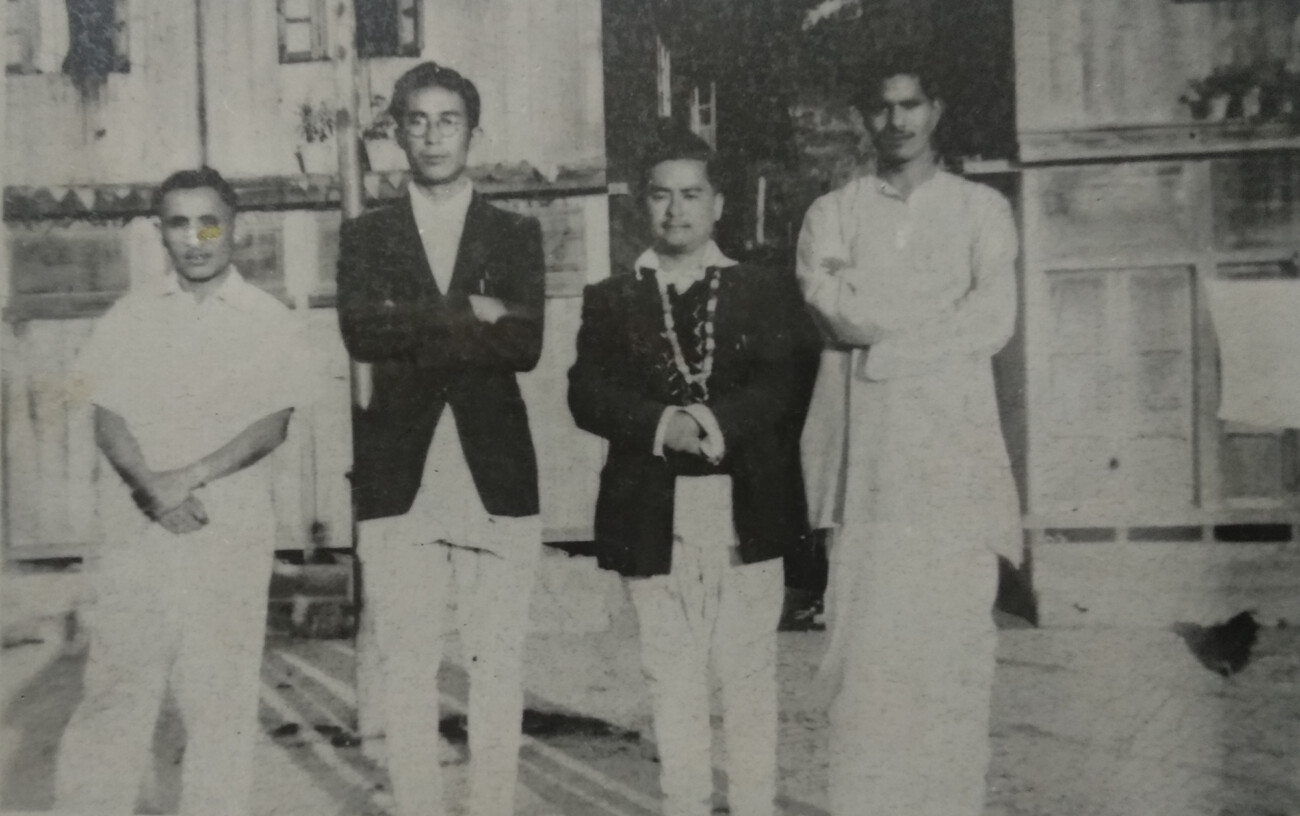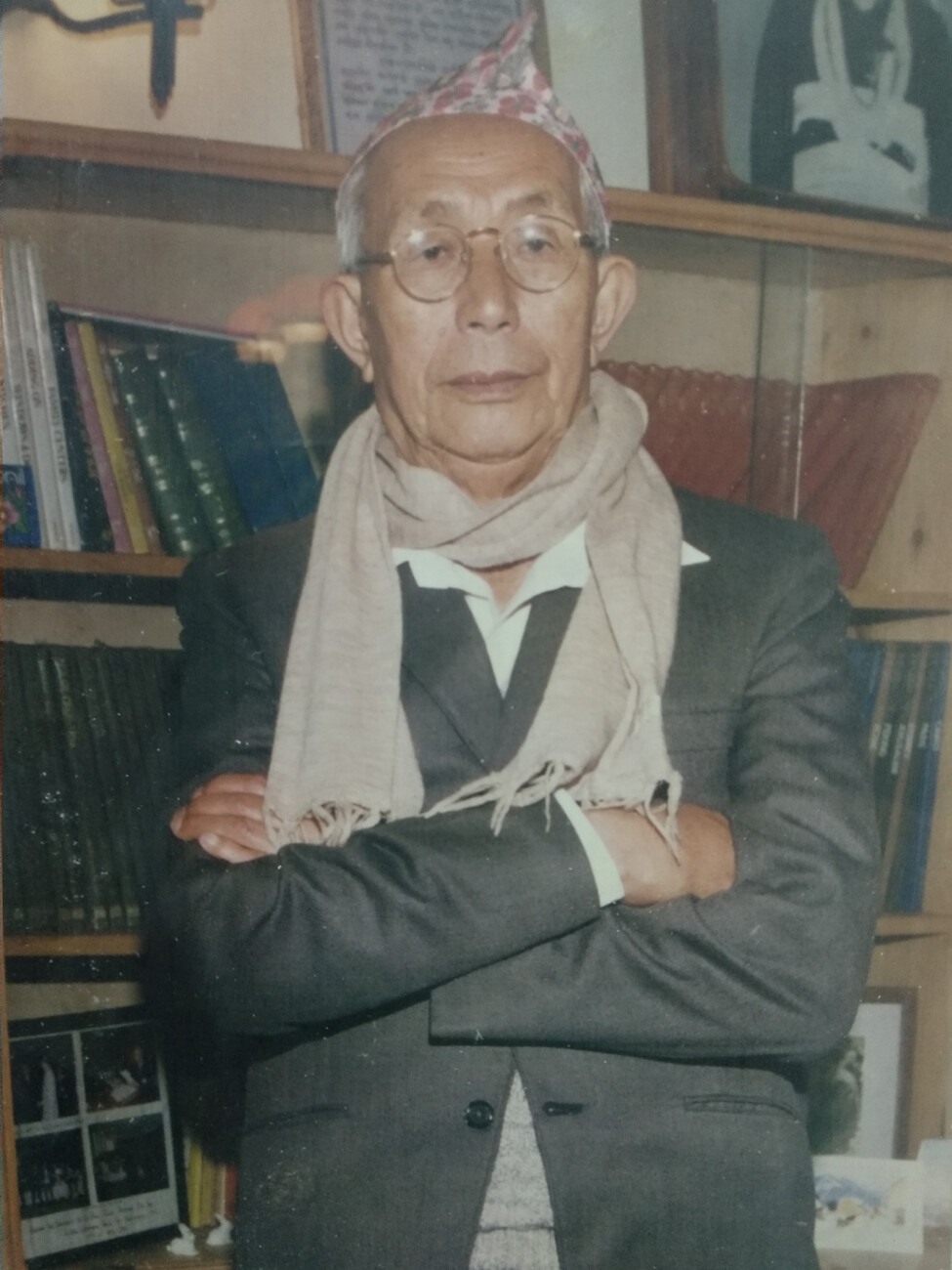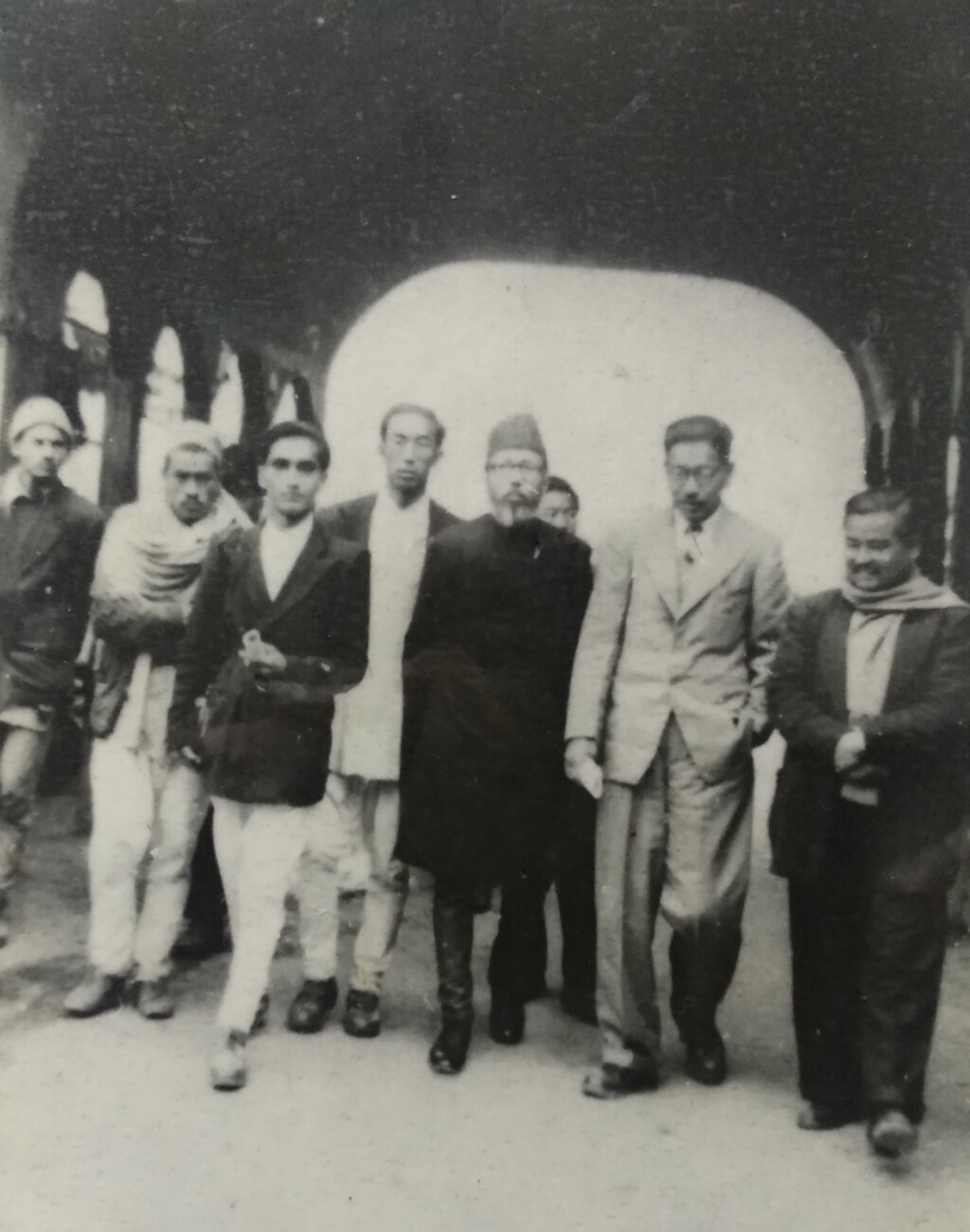On 15 April 1947, as the winds of change were sweeping the world after the Second World War, four friends—three young men and one a little older—met in a small room in Gangtok. The promise of freedom from colonial rule fired the imagination of the group. Each held a piece of paper in his hand and they were engrossed in an unusual activity in a largely illiterate society that existed in Sikkim then. One by one they read out their offerings—poems, stories and even jokes. Each was given an attentive hearing, and for a long time afterwards they were deeply engaged in discussions on the importance of literature to the momentous changes that were unfolding in their lifetime. Clearly, this was a group of men who were powerfully touched by ideas of freedom and equality. The very foundation on which societies were based for centuries were being questioned everywhere. The Indian freedom movement, promising a better world, had a profound influence on Sikkim and Nepal too. Life was hard for most people shadowed by darkness of illiteracy and hunger, and yet, there was hope of freedom from drudgery and slavery.
During the course of the discussion, the idea of forming a literary association was born. This was the beginning of the literary group APATAN, a small but, nevertheless, significant step in a feudal society where independent thinking was suspect. In this spirit, Tulsi Bahadur Chettri, the older member of the group suggested that they form a society which would bring together literary-minded people, and decided that the name of this society would be a combination of the first letter of their names. Thus the nomenclature APATAN—A for Agam Singh Tamang, P for Padam Singh Subba, T for Tulsi Bahadur Chettri, and N for Nima Wangdi Lepcha. The word APATAN means indestructible, strong. Perhaps the group believed that what they were forging in that little room was an idea that was indestructible—the relationship between literary creativity and society in Sikkim.

Agam Singh Tamang was from Namchi, the grandson of a powerful muktiyar (estate manager). He had been orphaned at a young age and was brought up lovingly by his aunts and grandparents. Having acquired basic education in Namchi, his grandfather sent him to study in Darjeeling Government Boys’ School. When he came home for the winter holidays, he would teach children to sing. He wrote his own lyrics and composed songs. In fact, his friend Chandra Das Rai reminiscences that he was a singer and nothing pleased him more than to sit with his harmonium. While his friends would go out and play after classes, he would be engrossed in music.
Padam Singh Subba was born in Timburbung village in West Sikkim on 11 September, 1923. His father was a mandal (village headman) who recognized the value of education and sent him to a school in Darjeeling. He completed Bachelor of Arts and Bachelor of Teaching. “After his education, Padam Singh devoted his time to spread education among the poor and oppressed, and led them towards growth and development, rather than living a life pursuing wealth,” writes Chandra Das Rai in the chapter entitled ‘APATAN Sahitya Parishad’, in his book, Nepali Sahitya ko Phulbarima Chandra Das ko Eyota Phul. Padam Singh was instrumental in supporting the development of the Limbu language as well. For forty years he worked as a teacher, and in the Government of Sikkim’s education department. He would take great pride in the success and achievements of his students. For his contributions he was conferred the Bhanubhakta Puraskar in 1989 by Nar Bahadur Bhandari, the then Chief Minister of Sikkim.

Having studied philosophy, Padam Singh was also deeply interested in the nature of language. His involvement in language and clarity of thought was evident when he was asked to give a small talk in Darjeeling’s Bhanubhakta School. He spoke about the meaning of the word kehi. He said that it is not easy to uncover the meaning of words. The meaning of the word changes according to the context and perspective from which it is spoken. As an example, the word kehi could mean more than one thing: it could mean two but it could also mean one thousand, and so on; thus, he illustrated the richness and complexity of a simple word like kehi.
Having agreed to create APATAN, the group formulated some simple rules. The reason to set up this association was to provide a platform to share their creative outpourings and explore the relationship between society and literature.
Tulsi Bahadur Chettri was from Darjeeling and worked as the headmaster of Namchi Government School for a few years. He went on to teach in Sir Tashi Namgyal Academy in Gangtok, and later left for Darjeeling, where he continued to teach and write.
Little is known about Nima Wangdi Lepcha, except that he was part of the group at the crucial time of its beginning and to which he leant the alphabet ‘N’ to form the name of the group, APATAN.
Having agreed to create APATAN, the group formulated some simple rules. The reason to set up this association was to provide a platform to share their creative outpourings and explore the relationship between society and literature. They would meet every Saturday to share original writings in any chosen genre—poetry, story, essay or even jokes. The penalty for failing to bring an original piece of writing was that the person would have to buy tea and snacks for the group. The membership was open to all interested in literature.
In the first annual report by the president of APATAN, Padam Singh wrote: “To develop literature is to give power to society and enhance the beauty of the country. Literature illustrates humanity’s victory and beauty. If there is no literature what is the meaning of our identity…?” (Ibid).


Tulsi Chettri, 1951
The political changes in Darjeeling also influenced these young writers. The twin ideas of nationalism and freedom were recognized as achievable goals in the not-so-distant future by the group. Agam Singh’s poem Patriotic Traveller speaks about the desirable goal of freedom and the difficulties faced by struggling patriots. In this poem, while he speaks about the difficulties of such a traveller, he exhorts him not to give up until the golden shores of freedom and nationalism are reached.
Being a teacher, Agam Singh also wrote poems addressing his students. When he was leaving Gangtok for Namchi, he wrote a farewell poem expressing his sadness in leaving his students behind, in which he instils in them the importance of being sensitive and disciplined. He stresses upon the importance of balancing play and study in his poem dedicated to them.
Tulsi Bahadur was well-known for his love of Nepali language. In his poem Mother Tongue, he writes passionately about the importance of the mother tongue in whose waters the heart swims joyfully, the sweetness of each word, and the power to instill in us pride, as well as shame, by the stories that are expressed through this language. He ends this poem with, ‘Dear children, do not forget our mother tongue.’
Things moved rapidly for APATAN when in 1952, under its aegis, the first-ever literary meet in Sikkim was organized in the White Hall, Gangtok.
In a light hearted tone, Tulsi Bahadur admonishes the procrastinating writers to turn away from doubts about their writing skills, to take courage and consider it their duty to move on and leave cowardly ways, and just write.
In those days printing was unavailable and the group chose Bhupal Lamichanay, a person with a beautiful handwriting, to copy their writing in a handwritten journal called Amulya Ratna (precious gem) after editing them carefully. Several editions were handwritten by Bhupal Lamichanay.
Things moved rapidly for APATAN when in 1952, under its aegis, the first-ever literary meet in Sikkim was organized in the White Hall, Gangtok. Luminaries of Nepali literature, such as, Lekh Nath Poudyal, Bal Krishna Sama, the grand poet Lakshmi Prasad Deokota, along with members of APATAN, Rashmi Prasad Alley, and eminent persons like Kashi Raj Pradhan were present for this historic two-day literary summit. One of the outcomes was the beginning of a publication called Kanchenjunga, edited and published by Kashi Raj Pradhan. The first edition came out on 15 August, 1957.
APATAN’s main concern was to highlight the important relationship between literature and society. Considering the odds against which the first-generation literate in Sikkim came to grapple with these ideas, their enthusiasm to express themselves and spread these ideas in an illiterate and backward society fills one with wonder and gratitude. In one such gesture of gratitude a road in Namchi is named APATAN.
5 comments on “APATAN: A STEP TO FREEDOM”
Leave a Reply
Latest Posts
Latest Comments
No 'Comments_Widget_Plus_Widget' widget registered in this installation.


Dear researcher
I am really glad to read your paper and reminded the moments which I spent with Padam Singh Babu from which I learnt many things from him. I never met Rashmi Prashad Alley jui but knew him about his contribution towards Nepali Literature. Congratulations once again.
Dr. Manorath Dahal, Asst. Prof. & HOD,
Department of Social Science, SCERT, Sikkim.
Thank you so much for the article. Padam Singh Subba, was our grand father, and we fondly remember how he used to narrate stories of the literary club. Always passionate about literature, he loved his pen and paper, and would always be seen either reading, writing or teaching till the time he could. 🙂
The name in the photo caption is Rashmi Prasad Alley and not 'Laxmi'.
The name APATAN was coined by my grandfather,Lt.Rashmi Prasad Alley based on the names of the founding members.Please do cross check
Dear Annapurna,
Thank you for writing to us. The name on the photograph was already there on the net.
In my research, I came across your grandfather's name on several occasions and of course I spelled his name as it was done in some of the sources.
Your grandfather was a dynamic person involved in many areas of life in Sikkim. He deserves an entire article and I would love to write about him. Would you be able to help me with material? Perhaps we could meet one of these days.
With warm wishes.
Prava Rai
In the article in APATAN it is written :-
"Little is known about Nima Wangdi Lepcha, except that he was part of the group at the crucial time of its beginning and to which he leant the alphabet ‘N’ to form the name of the group, APATAN."
Well, Nima Wangdi Lepcha was a beloved teacher at the SUMI School in Kalimpong. People still recall him giving "beth" or cane, to his students, of course in a fond way. His father was the renowned Pastor P S Taragain of Macfarlane Church. His wife was a Matron in the Steele Memorial Hospital of Dr Graham's Homes.